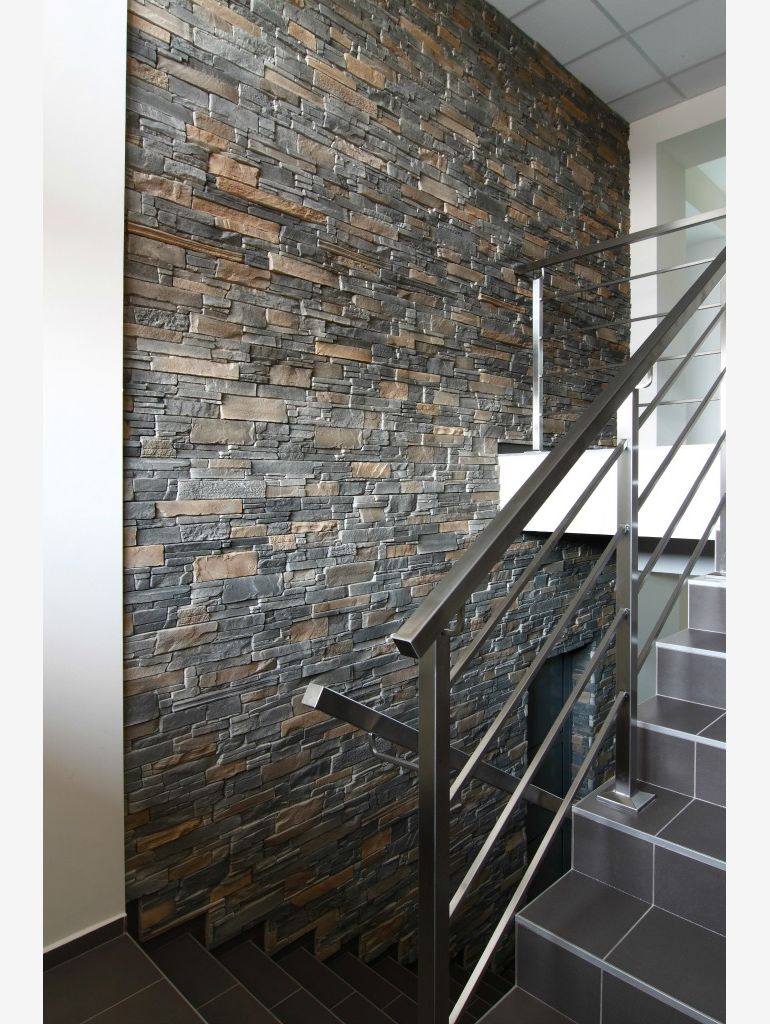The basic rule of designing an office interior is: the office is a showcase of the company. The rule of the first impression is valid in this case, too – the first impression of a potential contractor or a client will stay for long. While putting finishing touches to the company’s seat, it’s worth looking for unusual, eye-catching solutions. A few years ago, many architects referred to the company's logo and its colors, however now the interiors are tailor-made for the institution, its profile and people who create it. If you wish to enhance the unique character of the place, stone cladding will be the best choice.
Scandinavian design or classical elegance?
While finishing interiors with stone cladding, you should follow the rule “less is more”. Stone is a predominant material, a strong accent that draws attention, that is why it shouldn’t be on every wall in a room. It’s enough if the cladding becomes the “theme” of the place – you can finish this way a wall in the conference room, a fragment which stretches throughout the hall, details in the reception, a wall in an open space room destined for common projects… Stone cladding in the office space works best in the entrance zones – receptions, halls and foyers – says an architect, Karolina Radoń, from the design studio Karolina Radoń Design. It’s exclusive, and brings into the interiors some classical elegance and sophistication. It well suits places where the company's products, certificates and awards are presented, as well as where the customers and partners are hosted.
Let the details decide about the nature of the interior, let them set the right tone to the office. Stone cladding and artificial stone cladding will work perfectly in a somewhat ascetic office, especially in the particularly popular Scandinavian and minimalistic designs. It will be an obvious reference to nature, its simplicity, therefore the stone creates a harmonious duet with other natural materials, such as wood. On the other hand, it proves itself in the post-industrial style as well, highlighting the severity of the concrete. Moreover, the stone emphasizes Mediterranean style arrangements, bringing to one’s mind strolls along charming, Sicilian streets. As it turns out, stone is a versatile material, carrying a lot of meanings.
Instead of stone
Conglomerate claddings may be an alternative for stone. They perfectly imitate natural materials and are not worse when it comes to durability, strength and quality. Natural aggregate, pigments and a demanding process of manual preparation ensure an authentic look. Apart from the natural appearance, the decorative stone convinces investors for one more reason. It protects walls from the damages and dirt, which is particularly important in case of frequented traffic routes, such as the lobby connecting the two parts of the office.
Simple maintenance
Unlike the production, installation is not as time-consuming because of a lesser weight of the elements than in case of natural ones. Just clean the wall, impregnate it with a special detergent, level and after thorough drying glue the tiles. After 14 days the wall should be impregnated with a special sealer, such as Żywy Kolor do kamienia Stegu, which helps to keep the cladding clean and makes the daily care easier – explains Jacek Wróbel, the head of Biuro Projektów Stegu Ltd. Just to make sure, you can repeat the process twice within 24 hours. The daily care of the cladding isn’t hard, so the investors don’t have to be afraid of additional costs. It is enough to wipe the plaster tiles with a dry cloth and to wipe the concrete tiles with a wet cloth. A vacuum cleaner can also be used to keep the walls clean – emphasizes Jacek Wróbel.
A properly maintained artificial stone cladding doesn’t look different from the natural stone – it is most often chosen because of a low price. On the other hand, some kinds of stone can convince us with the resistance to mechanical damage and humidity. When choosing cladding, take into account the location and installation conditions.




